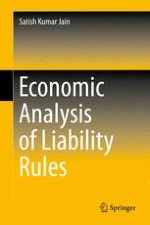2015 | OriginalPaper | Buchkapitel
3. The Structure of Efficient Liability Rules
verfasst von : Satish Kumar Jain
Erschienen in: Economic Analysis of Liability Rules
Verlag: Springer India
Aktivieren Sie unsere intelligente Suche, um passende Fachinhalte oder Patente zu finden.
Wählen Sie Textabschnitte aus um mit Künstlicher Intelligenz passenden Patente zu finden. powered by
Markieren Sie Textabschnitte, um KI-gestützt weitere passende Inhalte zu finden. powered by
